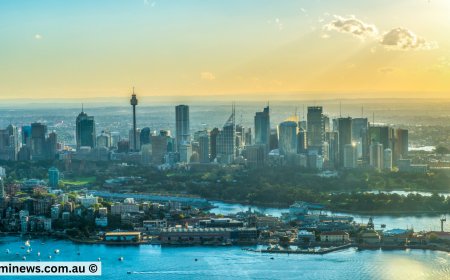Is Australia's Education System Under Threat? A Deep Dive into Student Visa Declines
Discover how recent policy changes have led to a 38% drop in Australian student visas, impacting VET, ELICOS, and higher education sectors. Learn more!

Recent trends reveal a significant decline in student visas granted in Australia, attributed to ongoing migration policy shifts and market fluctuations. This analysis breaks down the latest data and highlights the key areas affected.
Overview of Visa Reductions
Between October 2023 and August 2024, the overall number of study visas granted fell by 38% compared to the previous year. This decrease is particularly concerning given the proposed incoming caps that were expected to stabilize international student numbers.
Sector-Specific Effects
VET Sector
The Vocational Education and Training (VET) sector has faced the most substantial decline, with a staggering 67% reduction in study visas.
ELICOS and Higher Education
- ELICOS (English Language Intensive Courses for Overseas Students): Visas granted dropped by 50%.
- Higher Education: This sector saw a decrease of 25% in the number of visas issued.
These reductions highlight the uneven impact of recent policy changes across different educational sectors.
Policy Context
The challenges stem from various factors, including increased visa costs, heightened financial and English language requirements, and revisions to post-study work visa conditions. One of the most significant recent changes is Ministerial Direction 107, implemented in December 2023. This directive introduced stricter scrutiny of offshore student visa applications and is expected to be succeeded by the contentious ESOS Bill, which proposes international student caps.
Concerns Raised
There is widespread concern that these policy adjustments have compromised the fairness of the visa application process. Educational providers and potential applicants alike face uncertainty regarding the criteria for obtaining visas, complicating recruitment efforts.
Market Variability
While Bangladesh experienced a slight increase of 3% in student visas, the majority of markets reported notable declines:
- Philippines: -67%
- Colombia: -62%
- India: -56%
- Nepal: -53%
- Brazil: -46%
- Indonesia: -32%
- Vietnam: -28%
- Sri Lanka: -26%
- Japan: -7%
- China: -7%
The fluctuating market conditions have left students confused about the current value proposition of studying in Australia.
Challenges in Measuring Impact
The timeline for policy implementation further complicates the situation. Announcements made last December have only recently begun to affect student visa issuance, making it difficult to accurately gauge the impact of these policies.
Looking ahead, there are indications that universities may struggle to meet the proposed caps due to current market conditions, necessitating a recalibration of strategies.
Future Projections
Studymove forecasts a 6.2% increase in average international student fees in 2025, marking the highest rise since 2018. This increase is attributed to institutions shifting into "emergency mode" in response to financial pressures.
To adapt, educational institutions will need to reassess their international strategies, focusing on diversifying offerings such as study abroad programs, online learning, and offshore pathways.
In conclusion, the shifting landscape of Australian student visas is a complex interplay of policy changes and market dynamics, requiring careful navigation by all stakeholders involved.
What's Your Reaction?
 Like
0
Like
0
 Dislike
0
Dislike
0
 Love
0
Love
0
 Funny
0
Funny
0
 Angry
0
Angry
0
 Sad
0
Sad
0
 Wow
0
Wow
0







































































































